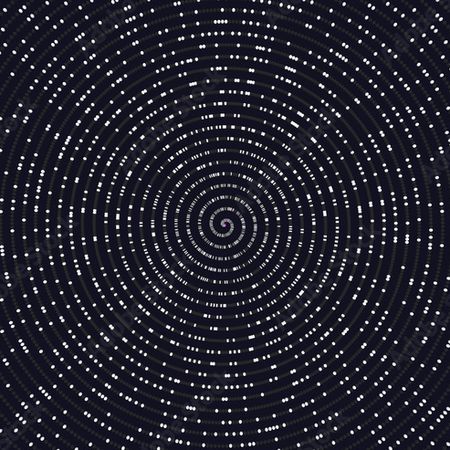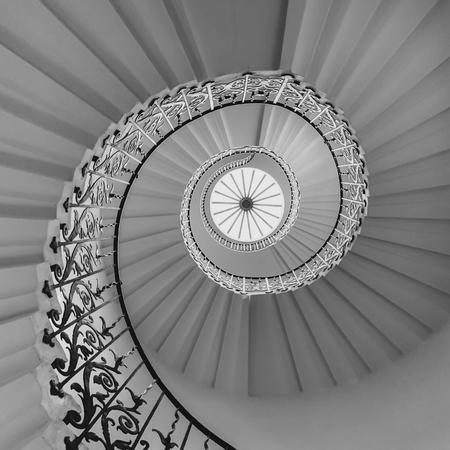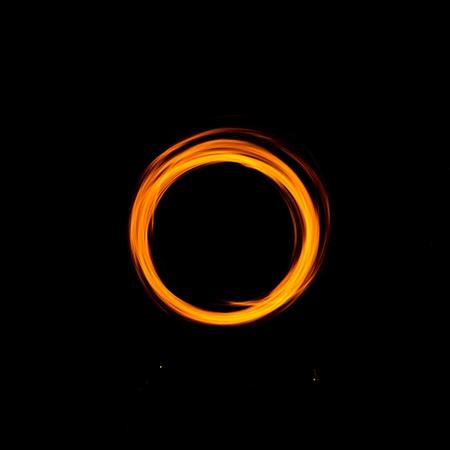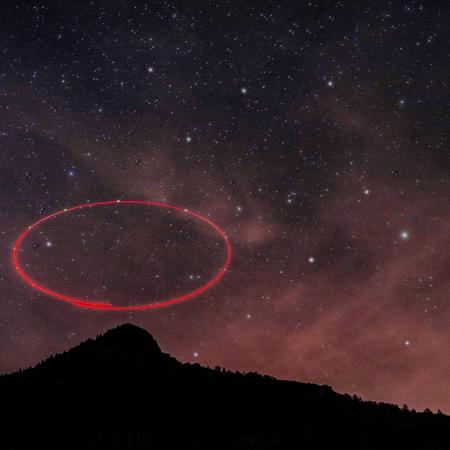“Falsehoods, spin and legends can be tweaked and tested and changed to exactly match the dreams and desires of the people they’re aimed at. This is why manipulative stories are so much stickier than what really happened. What reality has in its favor is that it’s generally resilient. Gravity doesn’t care who believes in it. It’s still here.” Seth Godin, Reality isn’t optimized
A helping hand
Our lives are a series of wrestling with new questions. When we are younger, identifying the answer is the difficult part. When we are older, the difficult part is understanding why.
The question of why the geometric mean is the solution to the field goal problem gnawed at me for months. Our team had exhausted its ideas, so I was starting to think there was no answer. Sure, it would be nice to have a simple explanation as with the Pythagorean theorem, but maybe there isn’t one. Sometimes math just happens, right? Does there have to be a reason behind the beauty? I could still enjoy the beautiful solution without knowing why it was beautiful, just like I can walk down the Grand Canyon and enjoy its beauty without knowing how it became beautiful or why it was beautiful.
Just when it appeared hope was lost, I shared this problem with another math friend, Hannah. Hannah and I had only recently met. We learned right away we were both intrigued by math problems, so we decided to meet at Starbucks just to talk math. Soon enough, I shared my field goal problem with her.
Hannah thought of a different way to solve the problem. She wasn’t trying to explain the WHY part I was searching for, but she had another possible solution. By then, I had been thinking about this problem for months and was highly invested, so I was eager to learn another solution. Interestingly, this solution doesn’t involve calculus and is much easier. But it will take some time to understand all the details.
A 3-step circle solution
This new solution to the field goal problem involves three steps. The first two steps simply involve unleashing special properties of a circle. It’s not until Step 3 when we return to the field goal problem and discover how a circle identifies the maximum angle to kick a field goal. Here are the 3 steps that we will explore.
Step 1: Choose 2 points on a circle and identify their properties. Step 2: Choose a third special point and uncover more properties. Step 3: Prove this circle is an optimal solution to the field goal problem.
Exploring a circle
Let’s start with a circle in the -plane. Where we place the circle in the -plane doesn’t change its properties. But we will use the -plane in a way that will simplify the math and reveal some rather hidden and interesting properties. These hidden properties exist even in simple examples, so we will keep it simple. Draw a circle that intersects the -axis at the points (0,2) and (0,8). Assume the center is in the upper right quadrant, so both and are positive. This simple setup is illustrated in Figure 1.
Step 1: Reviewing 2 points on a circle
Now, let’s identify what we know about the center of a circle. One property of a circle is that 3 unique points that are not on a straight line will define a unique circle. Thus, eventually, we will need a third point. But, for now, let’s see what we can learn from only two points. We defined the center of the circle as the point . Can we identify the -coordinate of the center using only two points?
First, find the midpoint between and . Since both points are on the -axis, the midpoint is also on the -axis. Because 5 is the midpoint between 2 and 8, this midpoint is at . Draw a line through this point parallel to the -axis. Since this line is parallel to the -axis, it is perpendicular to the -axis. The equation for this line is . It appears the center of the circle is on this line. But how can we prove it?
If the center is on this line, its coordinates are . Because is the center of the circle, its distance from and from must be the same since the length of two different radii of the same circle must be the same, as illustrated in Figure 2.
Now, draw a segment from to the point and another segment from the point to the point . This creates two triangles. Notice they share the same side from to . Both have a right angle as noted in Figure 3. Note that the sides on the -axis are the same length, 3, because is the midpoint between and . This gives us the same side, same angle, and same side between the two triangles. In geometry lingo, this is SAS. If two triangles satisfy the SAS condition, then they are congruent.
That means the length of the hypotenuse for each triangle must be equal, so both can be a radius for the same circle whose center is . In summary, we know the center of the circle can be on the line .
The next logical question is whether the center has to be on the line . Since we have only identified two points, there are an infinite number of circles that go through these two points. Is there a circle that goes through these two points whose center is NOT on the line ? Let’s assume there is.
Consider another point, say , which is not on the line . Then, we would draw our triangles as before. The two triangles still share a side, so those are equal. We still have a right angle, so we have congruent angles. However, the sides on the -axis would not be equal as displayed in Figure 4. That means if we apply the Pythagorean theorem where one side has the same length but the other side doesn’t, then there is no way that the hypotenuse of the upper triangle would be the same length as the hypotenuse of the lower triangle. This creates a contradiction, so our assumption that there exists a circle containing and and with center is false.
There wasn’t anything special about the number . We would encounter the same contradiction for any point we choose that is not on the line . Therefore, in our setup, the center must be on the line . That means if we draw a circle that intersects points and , the center of the circle must be at a point . Of course, we can identify in Figure 5 once we identify our third unique point.
Step 2: Finding the -coordinate
In order to uniquely define a circle, we need a third point that is not on the -axis. Rather than using coordinates to define the third point, we’ll define it by adding the requirement that the circle must be tangent to the -axis. Thus, our third point is the point where the -axis is tangent to the circle.
First, we must ask whether we know this point exists. In other words, do we know for sure that we can draw a circle tangent to the -axis that goes through our first two points?
Remember when we set our first two points and , we identified that the center of the circle through these two points must be on the line . But we can choose any point on the line and draw a circle. We know from the previous argument that the hypotenuse of both triangles (created by connecting the two points to the center) will always be the same length. Also, as we move the center farther to the right, we increase the value of , which increases the hypotenuse length, thus increasing the radius. In fact, we do not have a limit for the radius as we can continue to choose an farther to the right, which is a larger . Therefore, we know we can draw a circle through our two points so that it intersects the -axis simply by moving the center farther to the right. Here is an example of 3 circles, with the center on and containing the 2 points on our circle.
However, we don’t just want the circle to intersect the -axis. We want it tangent to the -axis. In other words, we want the circle to intersect the -axis at only one point. That leads us to ask if this tangent point exists and, if so, where? We know that we can draw a tangent to a circle at any angle because the circle is perfectly round. Thus, we know that there exists a tangent to the circle that is parallel to the -axis, which is illustrated in Figure 6. We also know that we can make the circle as large as we want, thus we know there exists a circle that intersects the -axis. That means there exists a circle that intersects our two points and is tangent to the -axis. The middle circle with a solid curve below is tangent to the -axis.
So what are the tangent point’s coordinates? Since this tangent point to the -axis is a point on the circle, the distance from this point to the center is the radius. Also, it turns out that this radius must be perpendicular to the -axis and, therefore, parallel to the -axis. That means the center and the point of tangency share the same -coordinate, which is our unknown . Because the tangent point is on the -axis, its -coordinate is . Thus, the third point on our circle in Figure 7 is , where is the -coordinate of the center.
We have 3 unique points, so we can define our unique circle. The key question is: what is the radius? The easiest way to get the radius is to use . Since the center is at the point , we conclude that the radius is the distance between the points and , which is .
Once we know the radius, it’s easy to find the unknown -coordinate for the center. Let's return to our triangles. Since is the length of one of the sides of our right triangle, we can use the Pythagorean theorem and write to solve for . Thus, the center is at the point .
Let’s review the 3 key points on our circle in Figure 8. We arbitrarily chose 2 points on the -axis: and . Then, we required that the third point be the point where the -axis is tangent to the circle. Now, we could create other circles that intersect the points and and intersect the -axis. This may be an interesting math exercise on its own, but why do we care about this circle?
We went through this exercise because we want the smallest circle that intersects the -axis and our two points on the -axis. I claim that the circle through the point creates the smallest circle that intersects the -axis and our two points. First, let’s confirm that it is.
Step 3: Proving the tangent circle is the field goal solution
Remember how we chose our third point. We knew from our first two points that the center of the circle must be on the line . As we moved left to right on this line, we increased the radius of the circle. Then, we chose the point on the line such that the circle centered at that point was tangent to the -axis. For our example, this resulted in the center being at . Now that we have this unique point, let’s identify what happens when we choose the center to be just to the left or right of .
If we move the center slightly to the right, the circle is bigger and intersects the -axis, but it isn’t tangent to the circle. If we move the center slightly to the left, the circle is smaller and fails to intersect the -axis. Therefore, when the -axis is tangent to the circle, we get the smallest circle that intersects the two points and the -axis.
The shortest distance between two parallel lines is the distance that’s perpendicular to both. Since is the shortest distance between the center and the -axis, then a distance (i.e., radius) shorter than from the center will not reach the -axis.
Notice what happens when we choose the third point to be where the -axis is tangent to the circle. The result is the smallest circle that intersects the points and and the -axis. In our example, this point is as shown in Figure 9. The circle with center at is smaller but does not intersect the -axis. This would be true for any circle with the center left of . The circle with center at does intersect the -axis but is a larger circle. This would be true for any circle with the center to the right of . That means choosing the center of the circle at the point produces the smallest circle that intersects our other two points and the -axis.
Why we want the smallest circle
We’ve done a lot of work to find the smallest circle that intersects our two points and the -axis. But why do we care about finding the smallest circle?
To answer this, first, we need a definition. An angle from the center of a circle to any two points on the circle is called the central angle. Let’s assume the center of our circle in Figure 10 is the point and we want the central angle with the points and . Because these points form a straight line, the central angle is half the angle measurement for a complete circle, which is π radians. As we move the center of the circle to the right of the point on the line , what change occurs to the central angle through the same two points? Notice the central angle decreases as we choose a center of the circle farther to the right on the line . This is a smooth process, where the central angle always gets a little smaller as the center of the circle is nudged to the right on the line .
Notice this allows us to conclude that the central angle from the center to the points and produces the largest central angle compared to circles that intersect these two points AND the -axis. This is because if we choose a center to the left of , the circle does not intersect the -axis. If we choose a center to the right of , the circle intersects the -axis, but the central angle is smaller. In short, if we state that the circle with center at produces the smallest circle that intersects our two points and the -axis, we are saying it produces the largest central angle of any circle that intersects these two points and the -axis.
Return to the field goal problem
As we have witnessed often in Lazarus Math, working with circles is an eye-opening experience as there are hidden treasures seemingly at every curve. This problem is no exception. However, our goal is to solve our field goal problem, but I haven’t mentioned the field goal setup yet. Recall we defined a “Field Goal Position” as a general setup for this problem. Let’s see how the “Field Goal Position” is defined in our circle example.
We’ll define the endpoints of the goal post as the two points that intersect the -axis, which are and in our example, and the -axis as our hash mark line. Even though we changed the numbers and created a circle rather than triangles, this setup is similar to our previous setup. We didn’t necessarily focus on the -plane in the original solution, but we could use the plane. The goal posts for the college setting were at and , and the optimal solution was at the point .
Let’s return to the current setup and rephrase our circle work in the context of the field goal problem. Assume the field goal posts are at the points and and the ball is placed on the -axis as illustrated in Figure 11. Then, if we draw a circle through the two goal posts and through the football, we will create a central angle through the center of the circle on the line . Then, if we choose the center of the circle to be at , the -axis is tangent to the circle at the point . If we place the ball at the point , the circle will have the largest central angle compared to any circle that intersects the -axis. Notice this means that if we place the ball at any point on the -axis other than , then the center of the circle must be farther to the right of the point .
In other words, as we move the ball along the -axis, imagine the center of the circle changing along the line . The place on the -axis that moves the center of the circle closest to the field goal posts is the point . Because this is the closest point, then it produces the largest central angle.
However, our goal is to maximize the field goal angle, not the central angle. How does the largest central angle solve our field goal problem? The answer lies in one more seemingly insignificant property of a circle that puts the finishing touches on this proof.
One missing piece: inscribed angle
We need another definition. We already defined the central angle which connects the center of the circle to any two points on the circle. Notice the center of the circle is the middle point on this angle. Let’s move this middle point from the center of the circle to a point on the circle. Now, rather than the central angle, we have an inscribed angle.
The question is, for a given circle with two fixed points on the circle, is there a relationship between the central angle, where the middle point is the center of the circle, and the inscribed angle, where the middle point is on the circle? Assuming we have the same two fixed points on the same circle, then the answer is yes.
The angle measure of the central angle is twice the angle measure of the inscribed angle if the endpoints of the two angles are the same two points on the circle. Let’s use the points and as our two fixed points. If we consider the circle with the center at , then the central angle is twice the inscribed angle formed by any other point on the circle. Of course, the point we are interested in is the point that intersects the -axis, the point of tangency .
Notice the inscribed angle using the middle point in Figure 12 is our field goal angle. Then, this circle property states that our field goal angle is the angle of the central angle, with the center at . Why is this important?
Connecting the inscribed angle and central angle
In our triangle solution, we defined as our field goal angle. This same is also our inscribed angle. That means the central angle is . Remember our goal is to maximize angle . When we maximize , we are also maximizing , which means we are maximizing the central angle. We can go the other direction and state that if we want the largest inscribed angle , then we want the largest central angle .
What is the largest central angle that meets our field goal requirements? It is when the center of the circle is at the point . As a result, we solve our field goal problem when we place the football at the point of tangency, which is . This is the smaller circle in Figure 13. If we choose any point on the -axis other than , the center of the circle that connects the football with the field goal posts must have its center to the right of , which means it has a smaller central angle and a smaller inscribed angle.
Let’s do the math to see if the result for this method is consistent with the previous method. Remember we identified the solution as the geometric mean of the distances from the origin to each goal post. In this example, the distances are 2 and 8. The geometric mean is , which matches the point of tangency, .
Wasn’t that special? Isn’t it amazing we can find a different solution to the field goal problem, a solution that is essentially independent of the first one? Notice this solution did not require any calculus and is primarily based on properties of a circle, with some help from triangles.
However, as eloquent as this solution is, we only solved the same field goal problem. We still don’t have an answer to the WHY problem. WHY is the geometric mean the solution? When Hannah shared this solution, I certainly found it interesting, but I did not see the answer to the why. This required just a little more thought.















